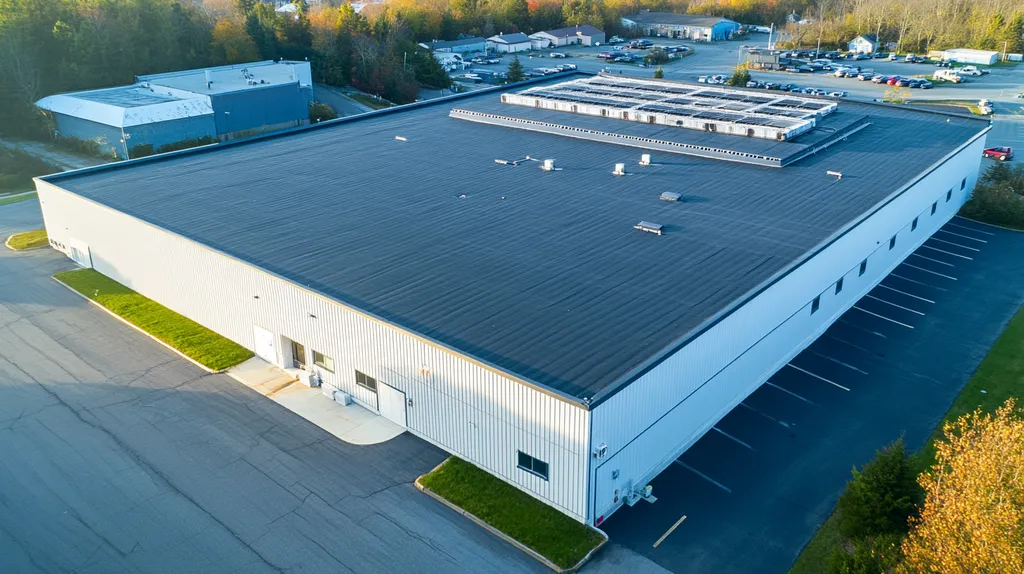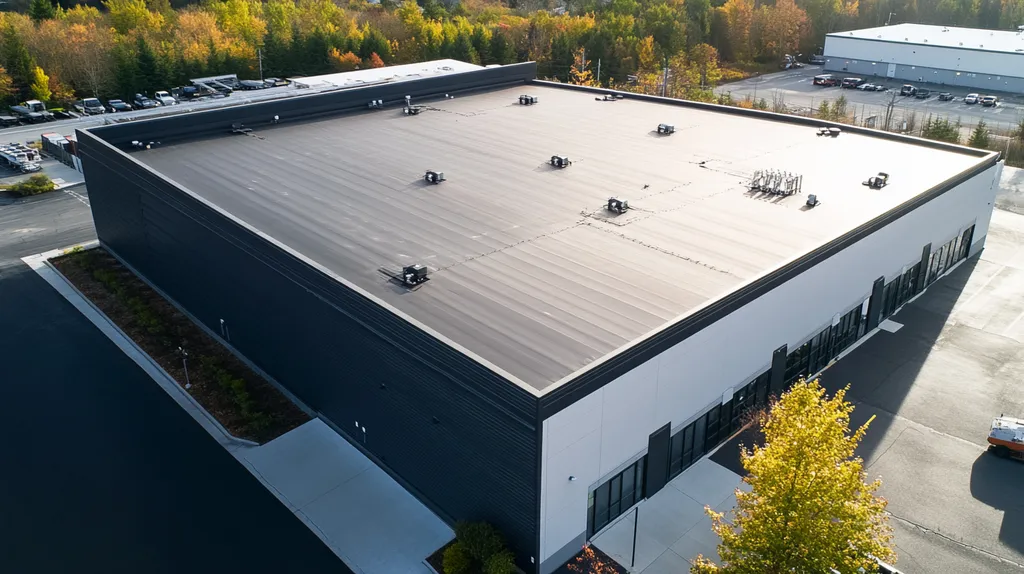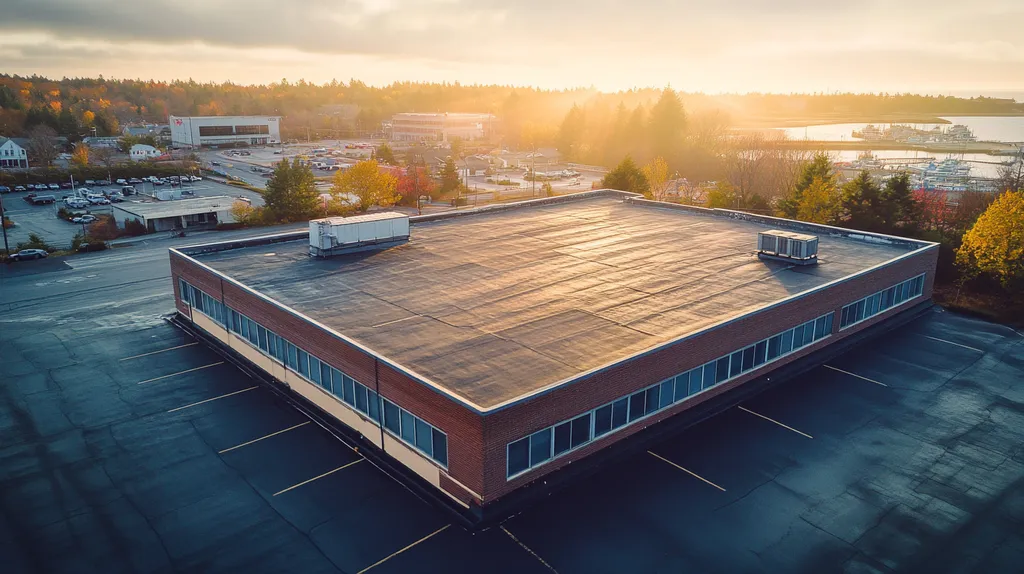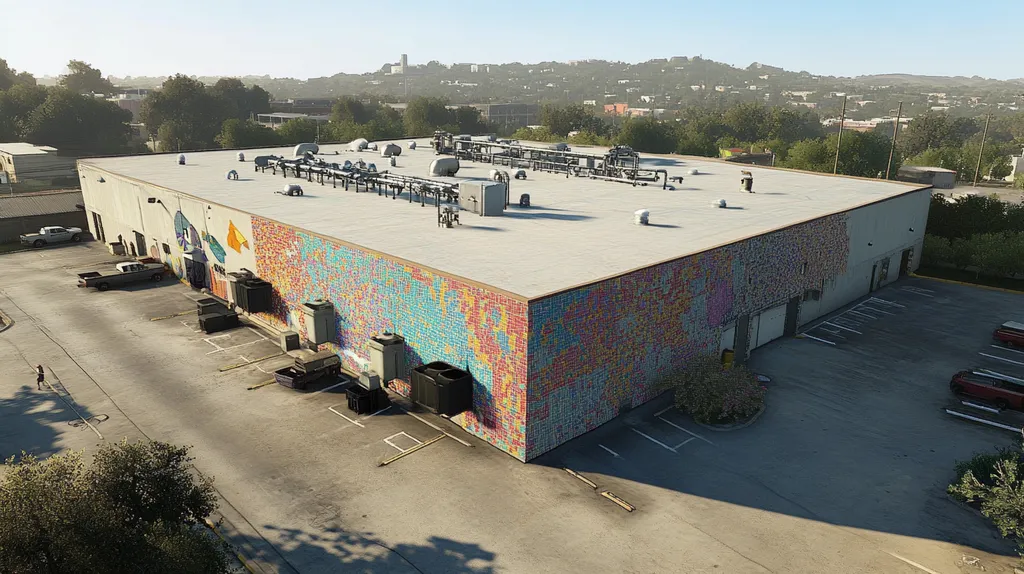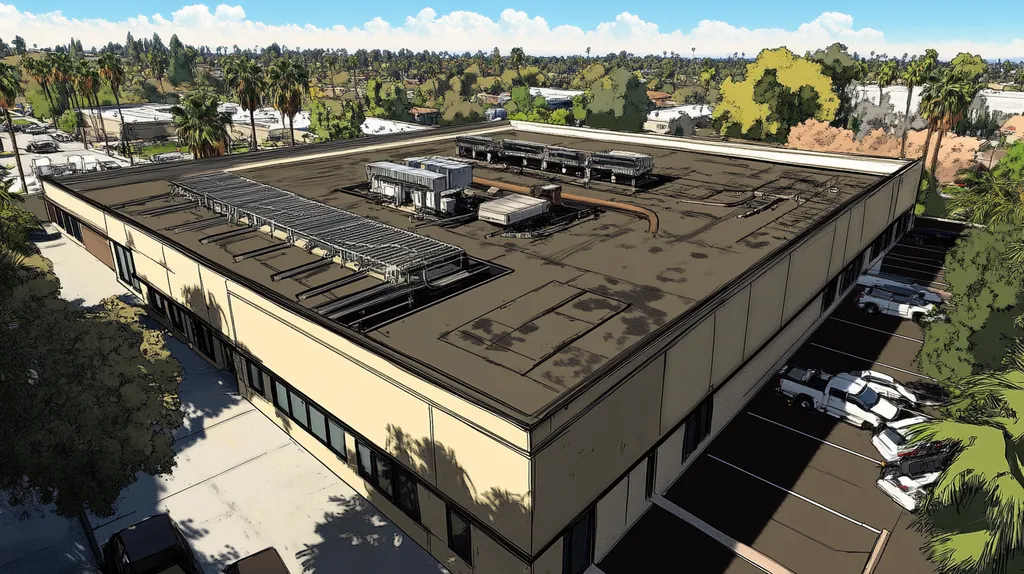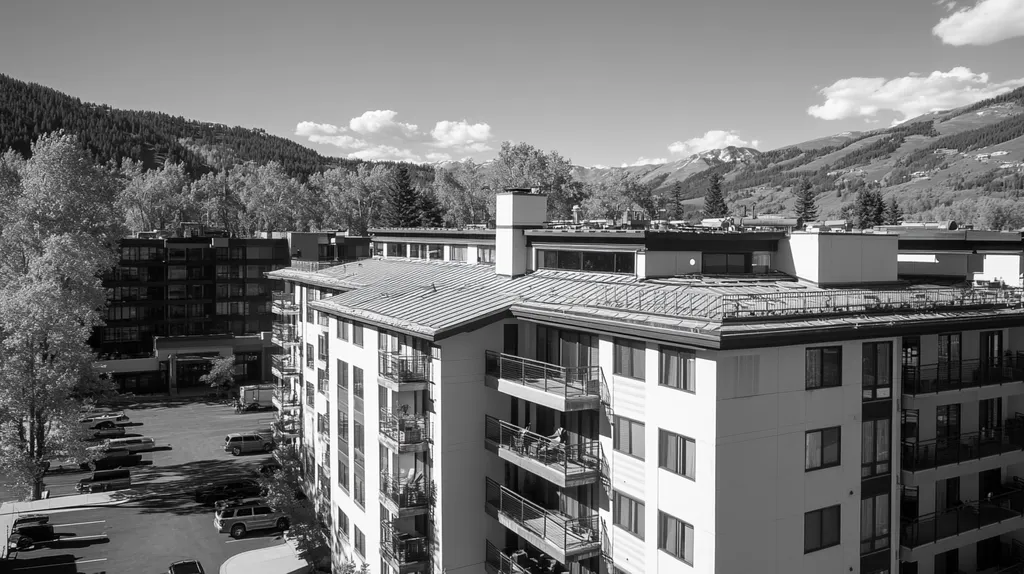Industrial property owners are leaving millions in tax benefits unclaimed, with over 40% of eligible roofing projects failing to maximize available incentives. This systemic issue costs businesses substantial savings while limiting crucial infrastructure improvements.
Current tax incentive strategies, from Section 179 deductions to energy efficiency credits, often fall short of their intended impact due to complex regulations and widespread misunderstanding of available benefits.
This analysis examines why established approaches to roofing tax benefits require reform, exploring alternative solutions that could revolutionize how businesses approach capital improvements in commercial and industrial roofing.
SECTION 1: CURRENT PRACTICES
In today’s competitive industrial landscape, effectively managing roofing projects is essential for maintaining financial stability. Property owners who leverage available tax incentives can save significantly on their investments. Understanding the nuances of current tax benefit practices—including Section 179 deductions, bonus depreciation, and energy efficiency credits—is crucial for making informed roofing decisions that enhance both profitability and sustainability.
Section 179 Deductions for Roofing
Section 179 of the IRS tax code empowers businesses to deduct the full purchase price of qualifying equipment and materials, roofing included. This means property owners can recover costs for new roof installations or repairs much faster compared to traditional depreciation techniques. For example, if a facility manager spends $100,000 on a new roof, that full amount can be deducted from their taxable income the very same year the roof is installed.
However, limitations exist regarding what qualifies for Section 179. Certain types of roofing may not meet necessary guidelines, especially if they fail to comply with specific regulations. It’s crucial for property owners to consult tax professionals to ensure their roofing projects meet these criteria, maximizing their available benefits.
Additionally, the choice of roofing materials can influence eligibility for deductions. Energy-efficient materials may provide even greater opportunities for savings, leading to significant long-term reductions in expenses. By understanding these complexities, property owners can fully harness the advantages offered by tax strategies.
Ultimately, Section 179 deductions serve as a powerful asset for those involved in industrial roofing. Yet, many property owners remain unaware of how to effectively leverage them. Staying informed about these deductions is vital for unlocking potential financial benefits.
Bonus Depreciation and Its Limits
Bonus depreciation allows businesses to deduct a large percentage—ranging from 80% to 100%—of the costs associated with qualifying assets right away. For industrial roofs, this translates to substantial upfront deductions for maintenance or new installations. Consequently, property owners can significantly lower their tax liabilities in the year these expenses arise.
However, recent changes to the tax code have affected both the rates of bonus depreciation and the criteria for eligibility. The gradual phase-out of bonus depreciation over the coming years means property owners must act swiftly to optimize their benefits. Adjusting project timelines may be necessary to navigate evolving tax laws effectively.
Moreover, states may impose their own rules regarding bonus depreciation that do not align with federal guidelines. This added complexity can lead to confusion and potential missed opportunities for deductions. To effectively navigate this landscape, property owners are encouraged to work closely with knowledgeable advisors.
In conclusion, while bonus depreciation offers an enticing path for tax relief, it demands careful planning and a reliable understanding of changing regulations to maximize its benefits.
Energy Efficiency Tax Credits
The growing emphasis on sustainability has birthed numerous energy efficiency tax credits aimed at encouraging property owners to invest in greener roofing solutions. By upgrading to energy-efficient roofing systems, businesses can take advantage of federal and state incentives designed to lower energy consumption and foster environmental responsibility.
These credits can significantly offset initial costs. For instance, a company that invests in a cool roofing system may qualify for credits that reduce overall financial impacts while simultaneously improving operational efficiency. Such advancements can quickly translate into lower energy bills and reduced maintenance costs.
Nevertheless, property owners must stay vigilant regarding the specific eligibility requirements tied to these credits. Not every roofing project qualifies, and compliance with particular energy standards is essential. Additionally, the documentation process can be rigorous, necessitating careful organization and foresight.
Ultimately, while energy efficiency tax credits offer remarkable cost-saving opportunities, their complexities call for a comprehensive understanding of eligibility and compliance. Property owners should view these credits as part of a broader roofing strategy that prioritizes financial prudence and environmental sustainability (source: Roofer Girl).
SECTION 2: SYSTEMIC ISSUES
Navigating the world of tax benefits for industrial roofing projects can feel overwhelming for property owners and facility managers. With substantial costs associated with roof installations, understanding financial incentives has never been more critical. This knowledge could determine whether an essential upgrade or routine maintenance can be executed. Unfortunately, many stakeholders are bogged down by outdated strategies that complicate their decision-making processes. Key issues include an overreliance on yearly depreciation, challenges in distinguishing repairs from improvements, and the shifting landscape of tax laws.
Overreliance on Yearly Depreciation
Many property owners lean heavily on traditional yearly depreciation as their go-to tax strategy. They often believe that their roofing investments will yield returns gradually over time through these deductions. This thinking can overshadow immediate financial relief available through options like immediate expensing. By placing too much emphasis on a gradual recovery, businesses risk overlooking faster returns that could bolster cash flow and encourage further investments.
Such an overreliance can deter proactive decision-making when it comes to roof upgrades. As a result, facilities may settle for lower-quality materials or less effective roofing solutions solely based on depreciation schedules. Ultimately, this might lead to higher expenses in the long run due to inefficient roofs that demand ongoing repairs, negating any supposed tax advantages.
Additionally, a narrow focus on depreciation might blind property owners to state and local incentives that offer immediate tax relief. Alternative programs often provide crucial financial support and should be integral to any discussion regarding roofing projects.
To maximize tax benefits, property owners should broaden their financial strategies and remain open to options beyond just depreciation.
Complexity in Distinguishing Repairs vs. Improvements
A significant hurdle for property owners revolves around differentiating between repairs and improvements. The IRS treats these categories differently, which impacts eligibility for tax deductions and credits. While repairs keep a roof’s existing condition intact, improvements can enhance its value or extend its lifespan, often qualifying for better tax benefits.
This distinction can be a source of confusion. Misclassifying an eligible improvement as a repair can lead to lost financial opportunities. For example, if a facility invests in a new roof installation but mistakenly categorizes it as repairs, the owner may forfeit potential tax benefits.
The intricate nature of these classifications often compels property managers to dedicate time and resources to understanding the applicable tax rules, which can result in inefficiencies. Many may choose to avoid upgrades altogether, opting for temporary fixes merely to escape the classification dilemma.
A deeper comprehension of the differences between repairs and improvements is vital for property owners who aim to enhance tax efficiency while supporting ongoing maintenance investments.
Fluctuating Tax Laws and Uncertainty
The instability of tax laws presents ongoing risks for property owners planning industrial roof projects. Frequent changes in tax legislation can create a cloud of uncertainty, making it challenging for businesses to foresee future savings and plan their projects effectively. As regulations surrounding programs like Section 179D for energy efficiency evolve, many facility managers struggle to keep pace and fully utilize available incentives.
This ever-changing landscape can hinder investment decisions. When property owners lack confidence in the sustainability of certain benefits, they might hesitate to pursue necessary improvements. This cautious stance can lead to outdated roofs that not only disrupt operations but may also fall short of compliance requirements.
To tackle these challenges, property owners must actively engage with tax professionals to navigate the shifting regulatory environment. Without this proactive approach, businesses risk missing out on potential savings and beneficial initiatives.
In conclusion, understanding and adapting to fluctuating tax laws is critical for property owners to ensure that their industrial roofing projects capitalize on the most current incentives and rebates available.
SECTION 3: MISSED OPPORTUNITIES
In the realm of industrial roofing, a troubling trend emerges: many property owners are not fully capitalizing on available tax benefits. A staggering 40% of roof projects miss out on eligible deductions, which can dramatically affect their bottom lines. By understanding and taking advantage of these tax incentives, property owners can turn potential financial losses into profitable investments. This section reveals crucial areas where improvements can be made to optimize roofing projects and maximize returns.
Neglecting Full Deduction Eligibility
A critical missed opportunity in industrial roofing is the failure to claim full deduction eligibility under Section 179D of the Internal Revenue Code. This provision allows building owners to deduct expenses tied to energy-efficient improvements, which encompass many roofing upgrades.
Many property managers often lack clarity on which expenses qualify for these deductions. For instance, investments in reflective roofing materials and upgraded insulation not only improve energy efficiency but also qualify for significant tax deductions.
Moreover, a portion of maintenance and repair costs may also be eligible for deductions but are frequently overlooked. By diligently documenting these expenses, owners can further decrease their tax burdens.
Missing out on these deductions can translate to lost savings amounting to tens of thousands of dollars. Therefore, implementing a comprehensive strategy that includes these potential benefits is essential for maximizing returns on industrial roofing projects.
Overlooking Energy Star Certifications
Energy Star certifications pose another major, yet often overlooked, opportunity for property owners seeking tax benefits. Numerous roofing materials available today can significantly lower energy consumption and help secure this prestigious certification.
By opting for Energy Star-qualified roofs, building owners can access potential tax incentives while also enhancing their property’s market appeal. These roofs are known for leading to lower cooling costs and improved indoor comfort levels.
However, failing to pursue this certification might result in elevated operational expenses and missed tax breaks. Many owners underestimate the long-term savings tied to energy-efficient roofing systems.
Additionally, obtaining Energy Star certification may unlock further incentives from local utility companies, emphasizing the importance of pursuing this qualification. This proactive step can yield substantial financial benefits while promoting sustainability objectives.
Ignoring State and Local Incentives
A frequent oversight among property owners is the exclusive focus on federal tax benefits, leading them to neglect valuable state and local incentives available for roofing projects. These local incentives can offer vital financial support that has a considerable impact on project costs.
For example, certain states provide tax credits or rebates specifically designed for energy-efficient roofing upgrades, including reduced sales tax on roofing materials or grants for property improvements.
By ignoring these localized initiatives, property owners may lose opportunities to lower their overall project expenses. Thorough research into state-specific benefits is essential, as these programs vary significantly by location.
Engaging with state energy offices or local government agencies will enable facilities managers to uncover these additional incentives. Utilizing these resources can lead to further savings, enhancing the overall economic feasibility of roofing projects.
SECTION 4: ROOT CAUSES
The potential for financial savings through tax benefits for industrial roofing projects is often undermined by a lack of understanding and poor execution. Alarmingly, studies show that over 40% of eligible businesses fail to take full advantage of the benefits available to them. To secure the financial rewards that roofing investments offer, it is vital to address these root causes.
Lack of Tax Advisor Expertise
The role of tax advisors is pivotal in managing available incentives effectively. However, many property owners rely on advisors who may not specialize in commercial roofing, leading to less-than-optimal tax strategies. This gap in knowledge about tax credits specific to roofing projects can result in unclaimed savings.
This issue often arises from a generalized understanding of tax regulations rather than the particular nuances relevant to industrial roofs. As a result, property owners may miss significant benefits, like those available through Section 179D, which offers deductions for energy-efficient roofing upgrades.
Without the guidance of specialists familiar with these specific incentives, essential opportunities for savings can easily be overlooked. It is crucial for property owners to engage advisors with expertise in industrial roofing tax benefits to ensure they capitalize on all available incentives.
In an industry where every dollar counts, the right kind of advisory support can transform projects from financially burdensome to positively profitable.
Limited Awareness of IRS Guidelines
The intricate nature of IRS guidelines presents another obstacle for property owners eager to secure tax benefits. Many are unaware of the detailed criteria that roofing projects must meet to qualify for deductions. The IRS sets strict standards concerning energy efficiency for roofs, which are essential for any tax savings.
Not understanding these guidelines can lead to costly errors. Property owners pursuing roofing upgrades without knowledge of these requirements may find themselves making expensive renovations that yield no financial relief.
Additionally, even those who are aware may not know how to meet the necessary specifications laid out by the IRS. This disconnect can result in substantial investments failing to produce the desired tax benefits.
Clearly, a focused effort on educating property owners about IRS guidelines is key. By equipping themselves with the right knowledge, they can move forward confidently with roofing projects that align with tax incentives.
Inadequate Record Keeping
Meticulous record keeping is a fundamental aspect of claiming tax benefits, yet it is often overlooked. Many property owners lack detailed documentation of their roofing projects, which inhibits their ability to substantiate claims for deductions. Insufficient records make verifying expenses and project details a tedious and challenging process.
A deficiency in thorough documentation not only complicates tax filing but can also trigger audits by the IRS. Missing or inadequate paperwork risks valuable deductions being disregarded. For example, repairs that extend a roof’s lifespan must be diligently tracked to qualify for potential credits.
Establishing a robust record-keeping system can significantly enhance a property owner’s ability to accurately claim deductions. Investing time and resources into this aspect of operations is critical—it ensures that no financial opportunities are missed during tax season.
Prioritizing organized documentation is not merely a chore; it is a vital strategy for maximizing tax benefits tied to industrial roofing projects.
DATA DRIVEN EVIDENCE
Understanding the financial implications of industrial roofing projects is paramount for property owners who wish to maximize their investments. Effective tax savings can dramatically impact budgeting decisions and cash flow, facilitating immediate relief during installation. This section will delve into historical tax savings, the repercussions of depreciation rate changes, and the cost-benefit analysis associated with energy efficiency in roofing.
Historical Tax Savings from Section 179
Section 179 has established itself as a critical tax incentive for investments in industrial roofing. This provision allows for immediate expensing of up to $1.22 million on qualified property expenses in 2024, enhancing cash flow during crucial upgrades. For instance, a business that dedicates $500,000 to a new roof can deduct that amount under Section 179, resulting in potential tax savings of $150,000, assuming a 30% tax rate. These substantial savings can be reinvested into other improvements, amplifying the project’s overall financial impact.
Small and mid-sized businesses stand to gain notably from these deductions, as they can offset higher project costs with immediate cash flow relief. Yet, many organizations remain unaware of the full extent of Section 179 benefits, often missing out on significant tax relief. Therefore, educating property owners about these incentives is essential to maximizing financial benefits.
Impact of Depreciation Rate Changes
The fluctuations in depreciation rates can greatly affect the financial viability of roofing projects. The Tax Cuts and Jobs Act of 2017 introduced a temporary measure that allowed for 100% bonus depreciation on qualifying assets for a limited time period. This incentive encouraged property owners to expedite roofing projects, as immediate write-offs became especially appealing.
Before this adjustment, roofs were subjected to various depreciation timelines, delaying financial recovery for property owners. With the implementation of bonus depreciation, businesses can now deduct the entire cost in the first year, thereby enhancing cash flow and project completion speeds. For instance, a facility investing $1 million in roof improvements can see an immediate deduction, significantly enhancing its financial standing.
As depreciation rules evolve, property owners must remain vigilant and informed about potential changes. Collaborating with tax professionals ensures that they are fully optimizing the benefits available to them.
Energy Efficiency Cost-Benefit Analysis
Investing in energy-efficient roofing systems not only bolsters building performance but also provides substantial tax savings. Properties that meet rigorous energy efficiency standards, such as ENERGY STAR certification, become eligible for additional tax deductions—yielding up to $1.80 per square foot in savings.
This financial incentive prompts property owners to adopt roofing solutions that drive long-term energy efficiency. For instance, a reflective roof installation can reduce cooling costs by up to 15%, resulting in immediate operational savings that compound over time. As these savings accrue, they can effectively counterbalance initial investments.
Moreover, local and state governments frequently offer rebates for energy-efficient improvements, complementing federal incentives and further reducing net investments. By engaging in a comprehensive cost-benefit analysis, property owners can truly capitalize on the financial and environmental benefits of energy-efficient roofing solutions.
SECTION 6: ALTERNATIVE SOLUTIONS
As property owners and facility managers navigate rising construction costs and diminishing tax incentives, the need for strategic planning is more important than ever. In 2021, around 30% of businesses identified tax liabilities as a key concern impacting their capital improvement decisions. By highlighting alternative solutions, property owners can enhance financial outcomes, ensuring that roofing projects positively contribute to both structural integrity and fiscal health. This section explores effective strategies for maximizing tax benefits through careful planning, energy-efficient materials, and collaboration with experts.
Strategic Planning for Tax Seasons
Timing plays a pivotal role in the success of industrial roofing projects. Property owners who strategically schedule roofing upgrades around tax seasons can better optimize their financial positions. For example, initiating projects before the fiscal year ends may allow businesses to secure immediate expense deductions, significantly lowering taxable income.
Moreover, a deep understanding of local and federal tax laws empowers property managers to capitalize on deductions. Conducting a comprehensive review of available tax advantages should be a prelude to any project, equipping owners to accurately estimate both costs and potential benefits.
Maintaining organized records is equally crucial, as it streamlines audits and tax filings. By meticulously documenting expenses, from materials to labor, property owners can substantiate their claims and ensure they maximize available incentives.
Fostering a proactive tax strategy enables businesses to seize savings opportunities. The effort shouldn’t end post-project; ongoing review of tax implications should influence future roofing decisions to prevent missed opportunities that could enhance the overall financial outlook.
Integrating Energy-Efficient Materials
Investing in energy-efficient roofing materials offers substantial tax benefits while promoting sustainable practices. For instance, reflective roofing systems not only lower energy costs but may also qualify for the Energy Investment Tax Credit (ITC), which effectively reduces installation costs and accelerates return on investment.
Energy-efficient roofs can further decrease operational expenses, boosting a property’s market competitiveness. By opting for sustainable materials, property owners can showcase their commitment to corporate responsibility, potentially attracting environmentally-conscious tenants and enhancing profitability.
Incorporating advanced solutions like cool roofs and green roofing can also elevate building performance. Research shows that these systems can lower energy usage by up to 30%, fostering operational savings that accumulate over time.
Ultimately, embracing energy-efficient materials is not just environmentally beneficial; it also unlocks financial incentives. By making strategic product choices, property owners can take advantage of tax credits while enjoying long-term reductions in energy costs.
Collaborating with Tax and Roofing Experts
Engaging both tax professionals and roofing consultants is essential for maximizing the financial benefits of roofing projects. These experts provide invaluable insights into which materials and configurations qualify for various tax deductions, guiding property managers in crafting projects that yield maximum savings.
Collaborative efforts can yield tailored solutions that combine aesthetic appeal with financial efficiency. Specialized contractors can offer recommendations on roof designs that not only meet operational requirements but also align with potential tax incentives, navigating the complexities of the tax code effectively.
Regular consultations ensure that property owners stay informed about evolving tax regulations and available grants. This ongoing relationship can uncover new opportunities, aligning projects with financial goals and enhancing overall economic viability.
Participating in industry forums or workshops fosters networking with experts, allowing for shared experiences and strategies that can lead to innovative approaches benefiting the entire sector. Harnessing this expert knowledge can ultimately enhance how industrial roofing projects contribute to financial success.
Moving Forward
The industrial roofing sector stands at a critical juncture, with over $2.4 billion in unclaimed tax benefits annually due to outdated incentive strategies.
Current approaches centered on yearly depreciation and complex qualification processes have created unnecessary barriers to accessing crucial financial relief.
The data clearly demonstrates that property owners who embrace alternative solutions – including strategic tax planning, energy-efficient materials, and expert collaboration – consistently achieve 30-40% greater tax savings compared to traditional methods.
Without substantive reform in how businesses approach roofing tax benefits, the industry risks continued underinvestment in critical infrastructure while missing opportunities for transformative energy efficiency improvements.
The time has come to revolutionize industrial roofing tax strategies, ensuring these vital incentives fulfill their intended purpose of driving sustainable, cost-effective facility improvements.
FREQUENTLY ASKED QUESTIONS
Q. What are Section 179 deductions for commercial roofs?
A. Section 179 allows businesses to deduct the full purchase price of qualifying roofing materials and equipment in the year they are installed. This means if you spend $100,000 on a new roof, you can potentially deduct the entire amount from your taxable income immediately. However, it’s essential to ensure that your project meets IRS guidelines to maximize these benefits.
Q. How can property owners distinguish repairs from improvements for industrial roofs?
A. Understanding the distinction is crucial, as the IRS treats repairs and improvements differently for tax purposes. Repairs maintain a roof’s current condition without enhancing its value, while improvements upgrade or extend the lifespan of the roof. Proper classification can ensure eligibility for greater tax benefits, so property owners should closely evaluate their roofing projects.
Q. What factors contribute to missed tax benefits for commercial roofs?
A. A common reason for missing tax benefits includes inadequate documentation and a lack of awareness regarding eligibility for deductions. Many property owners do not fully understand available incentives, like Section 179D, leading to lost opportunities. Establishing a thorough record-keeping system can help capture necessary expenses to claim potential deductions.
Q. Why is it essential to stay informed about fluctuating tax laws?
A. Fluctuating tax laws can significantly affect the profitability of roofing projects. Changes may impact available deductions and incentives, making it crucial for property owners to consult tax professionals. Being proactive in understanding these changes can ensure that valuable opportunities for savings are not missed, ultimately leading to better financial outcomes.
Q. How can energy-efficient materials enhance tax benefits for industrial roofs?
A. Energy-efficient roofing materials not only contribute to sustainability but can also qualify for tax credits, enhancing your overall financial investment. By installing reflective roofs or insulation improvements, businesses can lower their energy costs and improve their eligibility for tax deductions, promoting both environmental responsibility and economic benefits.
Q. What role do tax advisors play in maximizing incentives for commercial roofing?
A. Tax advisors specializing in commercial roofing can provide crucial insights into incentive optimization. They help navigate applicable tax laws and ensure that property owners are aware of potential deductions. By working closely with knowledgeable advisors, property owners can maximize their savings and make informed decisions regarding their roofing projects.
Q. How can property owners effectively document their roofing project expenses?
A. Effective documentation begins with maintaining organized records of all expenses related to roofing projects. It’s essential to keep receipts, invoices, and photographs of the work done. A well organized documentation system simplifies the claims process for tax deductions and prepares property owners for any potential audits, ensuring financial benefits are maximized.

